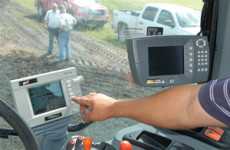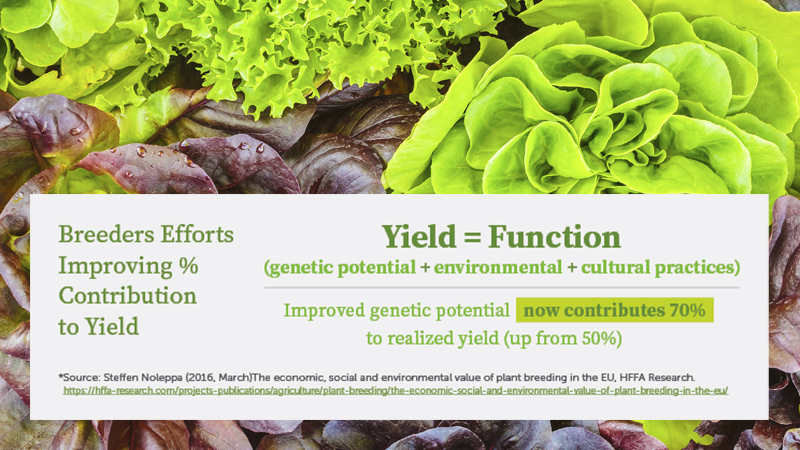Peppers, Partners, And Technology

A few years ago, J&J Produce ran into a problem, but it was a good one to have. Their customers were asking for more produce than they could source. So following their strong philosophy in customer service, the company decided to begin growing some of their own crops through a number of partnerships.
According to Tom Boe, J&J’s director of farming, what started out as a handful of acres five years ago has grown to nearly 3,000 acres in several states.
“We pack and sell for some of the growers we are working with, while others we actually partner with on the growing end,” he says. “We need product, so we’ll work with growers to do whatever it takes to get the produce. If we have customers looking for product, we don’t want to turn down a sale.”
Pepper Partnership And High Technology
J&J Produce plans to wrap up planting a farm of peppers in late January in the Devil’s Garden area in a partnership with Alico Inc. — a land management company with operations in several South Florida counties. Alico grew out of the company originally known as the Atlantic Land And Improvement Company, which was incorporated in 1898 as a subsidiary of the Atlantic Coastline Railroad. The company that is known today as Alico Inc. was incorporated in 1960.
Area growers have been interested in the project because some of the latest technology was used in the pepper plantings. J&J invested in 10 new Challenger Cat tractors, fully equipped with high-tech innovations to improve efficiency of operations. After working with Cat to smooth out a few early glitches and to learn the most effective use of the technology, Boe says they see promise in what the systems can offer.
“We are using GPS and auto-steer on the tractors,” says Bill Bethea, J&J farm manager. “Besides cutting down on overlaps and other efficiencies, we don’t need the work crew to do the measuring to set up the mulching and ditches. Just on the mulching and ditching, the technology is saving us about $25 per acre. When you throw in the reduced overlaps in spraying and disking, it starts to add up.”
According to Jack Tuten, assistant farm manager, the tractors also utilize TechStar continuously variable transmissions, which have provided additional benefits. The system allows the driver to maintain the optimum speed on any operation and a more efficient engine RPM to PTO ratio.
“When we are cultivating for example, we can set the disks to the perfect depth of the bed,” says Tuten. “When the driver gets turned around and ready to start on a new row, he pushes a button and disks go down to the exact depth and the tractor goes into operation at the perfect speed. This is another area where we are picking up operational efficiency and saving money.”
Tuten adds these efficiencies bring better fuel economy and better performance from the operator. All data can be logged including average speed, hours of operation, fuel efficiency, and more, which allows the growers to seek for even more opportunities for savings.
Pepper Agronomics 101
Boe says they choose pepper varieties based upon their shape and size to fit their customers’ demand. The peppers were planted starting in August, with blocks being planted weekly until the end of January. This will provide a steady harvest flow of peppers, which will start in November.
“We shoot to start harvest in early November as we begin to finish up harvest at our Adel, GA, location,” says Boe. “We time it that way so we won’t run out but don’t have too big of an overlap of supplies.”
Bethea says water management is probably one of the most important agronomic aspects of producing a successful pepper crop. A lack of water or too much can be equally damaging to the crop. Double drip tape from Netafim is laid out in each row, and the evapotranspiration method is used to schedule irrigation.
“We don’t want to over water or under water,” says Bethea. “Applying through the tape, we also micro-manage the fertility program of the crop. Over the course of the season about 300 units of nitrogen is fed through the tape.”
“You name them, we got them.” The growers joke about pest challenges in pepper production whether it is nutgrass, armyworms, whiteflies, or pepper weevils. They rely heavily on their consultant Sara Hornsby for recommendations on pest control.
As the industry worries over the phase out of methyl bromide, Boe says they decided to replace the fumigate on the farm this year with K-Pam (potassium N-methyldithiocarbamate, AMVAC). They made the move not only because the phase out looms, but also because the cost of methyl bromide is getting prohibitive.
The product is knifed into the beds with six knives versus the three they had used with methyl bromide. Boe says overall they are pleased with the performance of K-Pam this season.
Picking And Packing Pepper
When making his budgets, Boe projected about 1,600 boxes per acre for the peppers planted on the farm this year.
“I want to be sure we budget things in a way that we can make money based off of that yield,” he says. “We hope to do better than that on our yields, but we like to be safe from the budgeting side of things.”
While some shoot for the bigger the better the pepper, J&J is more concerned with the right shape.
“We are looking for a pepper that produces a good percentage of fruit that is uniform in size and shape,” says Boe. “We do a lot of place packing where half the pepper shows from the box. We want those peppers to look like they came out of a mold, because the buyer wants them to look like they came out of a mold whether they are selling them by the piece or pack. We want to provide our customers with produce that has a nice, uniform shape.”










